
The Lost Island of Castanamir (C3) is an adventure module written by Ken Rolston for the first edition of the Advanced Dungeons & Dragons fantasy roleplaying game. The adventure was published in 1984 by TSR. As part of the C(ompetition)-series of modules The Lost Island of Castanamir contains material first used as a tournament adventure. The adventure is intended for five to eight characters of level 1-4.

The Gem and the Staff, by John and Laurie Van De Graaf, is an adventure module for the Dungeons & DragonsExpert Set. Rather than being a typical group adventure, The Gem and the Staff was designed for head-to-head tournament-style play, with players separately playing the same adventure and competing against each other for points earned by accomplishing certain goals. The adventure is only playable with one dungeon master (DM) and one player.
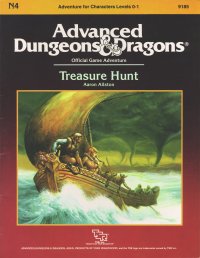
Treasure Hunt is an adventure module for the Advanced Dungeons & Dragons (AD&D) role-playing game, written by Aaron Allston for the 1st edition Advanced Dungeons & Dragons (AD&D) rules. The player characters must evolve into their roles as the adventure progresses, beginning as slaves on a galley who become freed after a shipwreck on an island where orcs and goblins contend over a treasure. The adventure received a positive review from White Dwarf magazine.
The Empire of Thyatis is a powerful state in the Mystara campaign setting for the Dungeons & Dragons fantasy role-playing game. Thyatis was first mentioned in Module X1, Isle of Dread, which describes it briefly. Along with the Alphatian Empire, Thyatis was more fully detailed in the Dawn of the Emperors boxed set. Along with Alphatia, Thyatis is one of the "great powers" of Mystara.
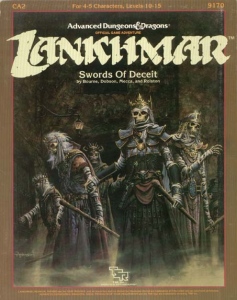
Swords of Deceit is a 1986 adventure module for the Advanced Dungeons & Dragons fantasy role-playing game, for the Lankhmar setting.

Rahasia is an adventure module, self-published by DayStar West Media in 1980 and published by TSR, Inc. in 1983 and 1984, for the Basic Set rules of the Dungeons & Dragons fantasy role-playing game. Its product designation is TSR 9115. It was designed by Tracy and Laura Hickman, and features artwork by Jeff Easley and Timothy Truman.

The Veiled Society is an adventure module for the Basic Rules of the Dungeons & Dragons fantasy role-playing game published in 1984. The adventure's product designation is TSR 9086.
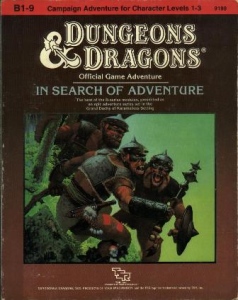
In Search of Adventure is an abridged compilation adventure module published by TSR, Inc. in 1987, for the Basic Set of the Dungeons & Dragons (D&D) fantasy role-playing game. Its product designation was TSR 9190. This 160-page book features cover artwork by Keith Parkinson.

Night's Dark Terror is an adventure module for the Dungeons & Dragons (D&D) fantasy role-playing game written by British game designers Jim Bambra, Graeme Morris, and Phil Gallagher. It was designed specifically for campaigns transitioning from the D&D Basic Set to the D&D Expert Set. The player characters (PCs) journey from a farmstead into uncharted wilderness, where they encounter new hazards and contend with a secret society. The adventure received a positive review from White Dwarf magazine.
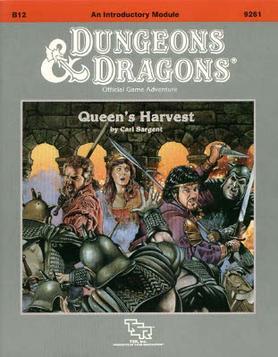
Queen's Harvest is a 1989 adventure module for the Dungeons & Dragons role-playing game. Queen's Harvest picks up the story where B11 King's Festival left off; it can be played as a sequel to that adventure or by itself. Tailored for beginning Dungeon Masters and players, it is set in the country of Karameikos in the Mystara campaign setting, and contains adventuring tips for players.
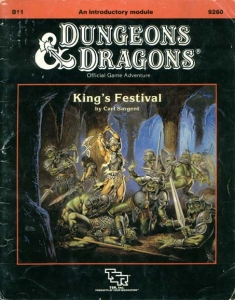
King's Festival is an adventure module for the Dungeons & Dragons fantasy role-playing game.

Drums on Fire Mountain is a 1984 adventure module for the Expert Rules of the Dungeons & Dragons fantasy role-playing game. It was written by Graeme Morris and Tom Kirby and published by TSR.
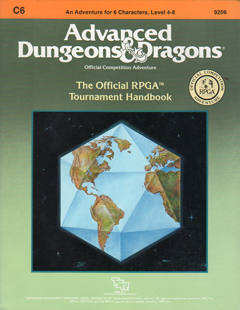
The Official RPGA Handbook is an adventure module for the Dungeons & Dragons fantasy role-playing game, set in the game's World of Greyhawk campaign setting. TSR, Inc. published the module in 1987 for the first edition Advanced Dungeons & Dragons rules. It is part of the "C" series of modules, a set of unrelated adventures originally designed for competition play.

The City of Greyhawk is a boxed set accessory for the World of Greyhawk campaign setting, part of the Advanced Dungeons & Dragons fantasy role-playing game. It was designed by Doug Niles, Carl Sargent, and Rik Rose, and published by TSR in 1989. It describes the Free City of Greyhawk in detail, and was highly praised by Dragon magazine.
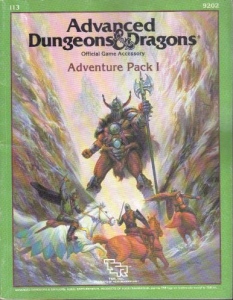
Adventure Pack I is an adventure module published in 1987 for the Advanced Dungeons & Dragons fantasy role-playing game. It contains a variety of adventure scenarios written by different authors, and received mostly positive reviews.
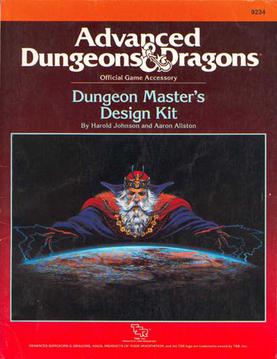
Dungeon Master's Design Kit is an accessory for the Advanced Dungeons & Dragons fantasy role-playing game.
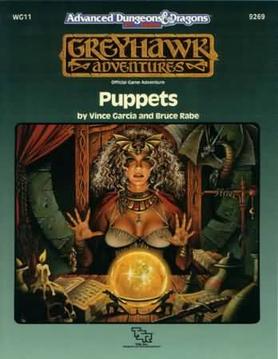
Puppets is an adventure module published by TSR in 1989 for the fantasy role-playing game Advanced Dungeons & Dragons.
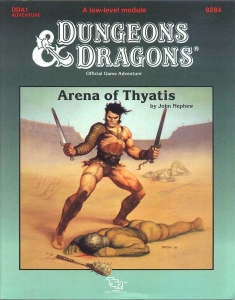
Arena of Thyatis is an adventure module published in 1990 for the Dungeons & Dragons fantasy role-playing game. This module is linked with Legions of Thyatis.

Nightwatch in the Living City is an adventure for the 2nd edition of the Advanced Dungeons & Dragons fantasy role-playing game.

The Halls of the Dwarven Kings is an adventure published by Integrated Games in 1984 for any role-playing game system.



















